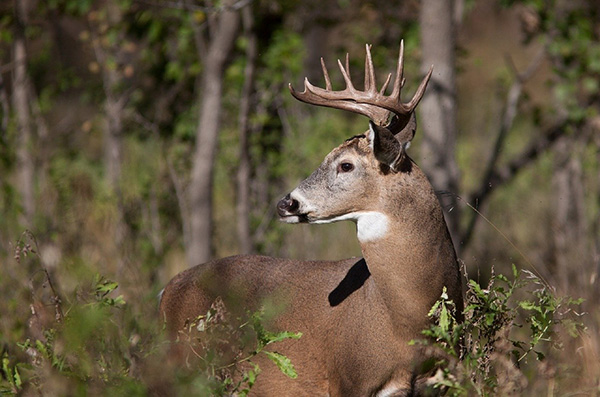Researchers Find Lead Contamination in Shotgun-Harvested Deer

Oct. 21, 2020
BLOOMINGTON, Ill. — A recent study by an interdisciplinary research team consisting of several Illinois Wesleyan University faculty members, an IWU alumna, and a local veterinarian found that nearly half of ground venison packets from shotgun-harvested deer may contain metal fragments –– including lead –– potentially leading to adverse health effects for humans and wildlife.
This study, published in the Bulletin of Environmental Contamination and Toxicology , involved Illinois Wesleyan faculty members across the sciences: George C. and Ella Beach Lewis Endowed Professor of Biology Given Harper, Associate Professor of Chemistry Manori Perera and Assistant Professor of Environmental Studies Aaron Wilson, as well as environmental studies alumna Genevieve Alexander ’14.
“I have published numerous papers with IWU students and chemistry faculty, so I knew the importance of having an interdisciplinary team,” said Harper. “Dr. Wilson’s expertise in toxicology was critical to the success of the project, and he did an outstanding job in determining the potential human health impacts of lead. Dr. Perara’s expertise in analytical chemistry helped us in quantifying lead levels, and Dr. Matt Fraker (Doctor of Veterinary Medicine) made the X-rays and helped us to locate the metal fragments. I was also very pleased that Genevieve (Jinny) Alexander contributed to all aspects of the project.”
The researchers found that lead shotgun slugs can fragment upon impact with the deer and lodge in the surrounding tissue, contaminating the meat. “Packets in which metal was present contained 1-2 fragments, so that means about one out of every four venison burgers will have a lead fragment in it,” explained Wilson.
Furthermore, more than half of the meat processing plants surveyed for this study reported mixing deer meat from multiple hunters in their venison packets, which may contaminate the meat from deer tissue without shotgun fragments.
Based on Perera’s chemical analysis, the research team predicted that one serving of ground venison containing a metal fragment could have a lead concentration between 6.4 to 51.8 μg g−1. Because lead is a highly toxic substance, even trace amounts can impact not only humans but also the wildlife that scavenge meat from abandoned carcasses.
“Readers should not be scared away from eating venison,” Wilson assured. “But they should know that by harvesting the venison with lead shotgun slugs, they increase their risk of lead exposure.”
The researchers also found that none of the archery-harvested deer contained fragments of lead. Harper, a deer hunter and venison-lover himself, advocates for the use of non-lead slugs in order to continue responsibly hunting, which according to him is “a vital, necessary management tool to control the white-tailed deer population in Illinois.”
“The use of non-lead ammunition is not only beneficial to human health, but it benefits wildlife such as bald eagles that scavenge unrecovered deer and offal piles,” Harper concluded.
By Rachel McCarthy ’21